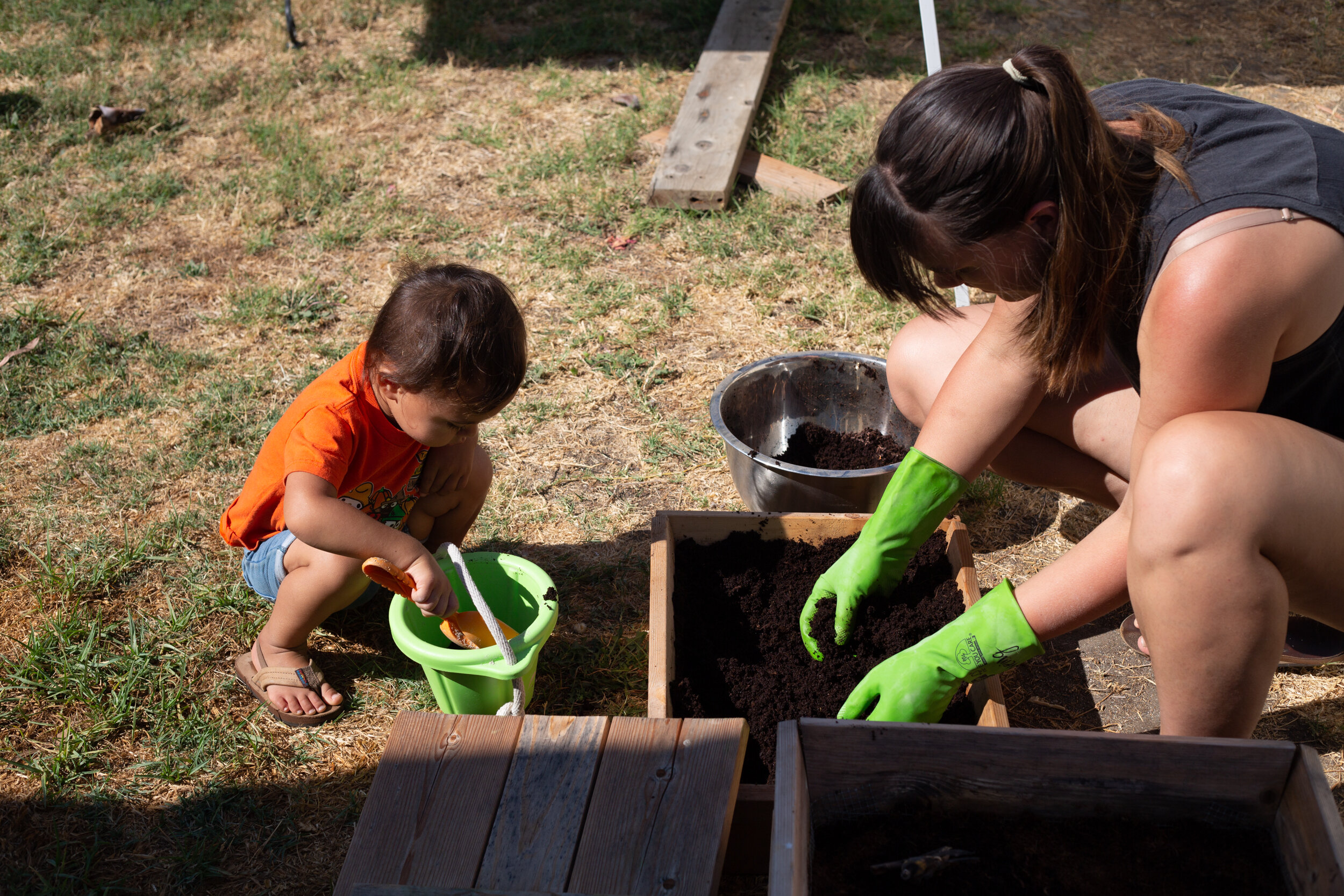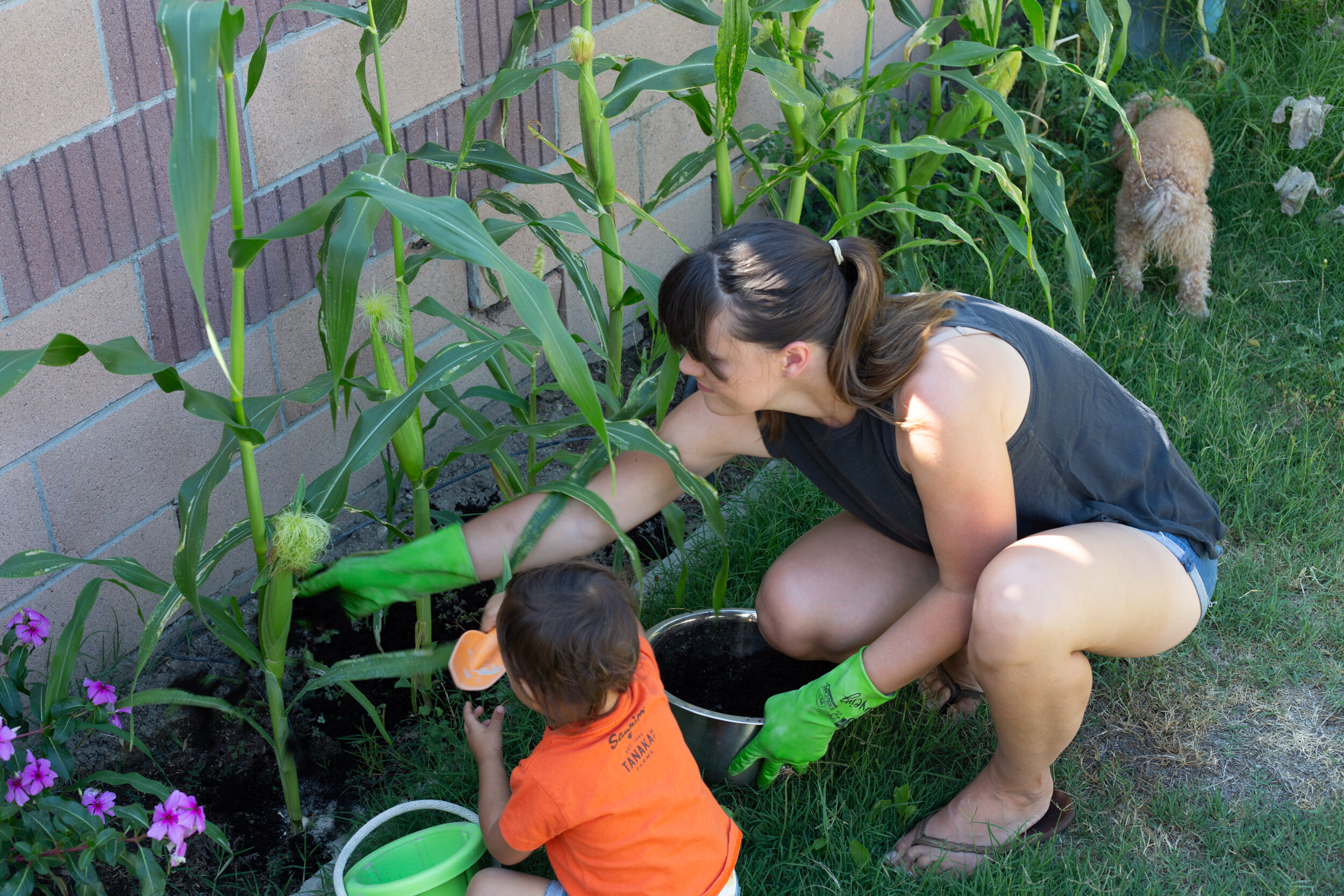Living More Sustainably
I’ve always valued being “green” and more “eco-friendly” but until the last few years, I had been a bit naive about what that meant. I thought that recycling was enough and didn’t think much about what happened to our trash (or recyclables) after we put in in the bin and it got taken to the dump (or recycling center). It just didn’t really cross my mind. And when I saw others talk about zero-waste or living more sustainably online, I kind of thought it was silly or unattainable in today’s society. But taking one step at a time, has made it way easier than I every imagined… And the more I learn about it, the more I’ve found that it isn’t about being perfect, but rather, doing what you can! Because a lot of people imperfectly trying to live more sustainably is more valuable to the world than just a few who do it perfectly.
I really started this journey when I became pregnant with my daughter back in 2017. I was learning about the different chemicals in everyday items that could be harmful to developing minds and bodies (such as phthalates, which are commonly found in some plastics and fragrances) and I started looking for safer and more natural alternatives. Eventually this led to reducing our use of plastics in our home and it all just snowballed from there.
To me, living more sustainably means being more mindful about the things that I buy and reducing the amount of things I that end up in the landfill. It means buying things that I know will last a long time, and are less likely to leach nasty chemicals into my food or into the air at the end of their useful “lives”. I try to buy fabrics made out of natural fibers and use glass, wood, or stainless steel instead of plastics. I’m also no longer looking for the “best deal” or cheapest price because, I know that if I’m not paying for it, I probably will later, or somebody else or the Earth will, eventually. I want the people who make the items I buy to live happier healthier lives and don’t want to support companies that value profits more that people and the Earth. To do these things, in todays society, is not an easy feat. We are so build on convenience. And at first, it just seems easier to consume and toss it away. But I’ve found that being more mindful about these things has actually been quite freeing as well… More and more I feel confident that I am making the best choices for myself, my family, and the Earth.
So, I wanted to share with you some of the things that I have started to do in my own home, to live more sustainably. Some of these swaps may seem more costly to begin with than their disposable counterparts, but can save you so much over time, because you can use them indefinitely. You can use this post as a starting point if you are interested in becoming more sustainable inyour life, or just fulfill your curiosity about what I do in my home. And if you already are striving to be more sustainable in your home, I would love to hear about what you do in the comments, below!
If you are just starting out like I was and feel driven to make some of these changes in your life, please remember this:
I started out with just one thing at a time, and it’s grown from there.
It isn’t about being perfect, but doing what you can!
Use what you have, first!
One of the biggest misconceptions about becoming more earth-friendly and reducing waste and our reliance on plastic, is that you should toss out all your plastic or disposable items and switch to reusable more earth-friendly products immediately. However, this is one of the worst things you can do, as those products are then completely wasted and all the energy that was put into making those products has been wasted, too. So the best way to go about it, is to use up what you have first, and then when you run out, you choose a reusable or more sustainable option. You can also give the item to a friend or family member that you know would use them, or use them sparingly as you use the more sustainable option as well. I still have a bunch of plastic wrap and plastic disposable bags that I bought years ago (Costco) and I try to use them less often, but haven’t completely replaced them with more sustainable options, yet. This way saves money, too!
Get Creative
Store left overs in jars instead of plastic bags. Instead of a paper towel or plastic wrap when microwaving or storing something in the fridge, you can use a plate on top of a bowl or another plate. I don’t know why I didn’t think about this before! You might already have something that is a more sustainable swap without buying anything!
Find a Refill Shop
Many communities have refill shops where you bring your own container and purchase bulk items by weight. Our local store has mostly personal care and household cleaning products in bulk. I love filling up mason jars and it greatly reduces the plastic containers that we bring home. And the shop keepers are amazing resources as well! I’ve learned so much just by following our local BYO Long Beach shop on Instagram!
Cloth Napkins
Replacing our disposable paper napkins with cloth napkins has been one of my favorite earth friendly swaps. It just feels so nice to use cloth at our meals. The cloth feels better on my skin, and is more effective for wiping your hands or face. I just throw them in the wash whenever I have kitchen towels to wash. Makes me wonder why I was ever using paper napkins to begin with!
Un-Paper Towels & Swedish Dish Cloths
I’ve also stopped buying paper towels. And it has been easier than I thought. We use these small cotton cloths (unpaper towels) to wipe up messes as well as Swedish dishcloths to wash dishes and clean up messes. Swedish Dishclothes are made from cellulose (trees)—they can withstand hundreds of washes and compostable at the end of life. A lot of times, these do a better job than the paper towels ever could. In the rare instance when I really don’t want some mess to touch my laundry, I have used toilet paper to clean up the mess and flushed it.
Go Vintage!
Buying things second hand or at antique markets can be a great way to reduce waste and decrease our use of plastic containers, especially if you love vintage style! I love this vintage Pyrex set that I found at a local antique swap meet. Buying vintage clothing, or gently used baby gear are great ways, too!
All Metal Razor
I recently purchased this razor from a company called “Leaf”. It has a flexible head, just like the razors I was used to using, except no plastic cartridges. You replace the blades themselves—which is actually quite simple—and much more cost effective than the plastic cartridges from other companies. And you don’t even have to buy their blades, you can get them from other companies, if you find a better price too! This is another one of those swaps that seems oh so luxurious! I spend way less on razor blades, and the shave seems way smoother as well!
Composting
I started vermicomposting—composting with worms—last fall! It’s intensly interesting, amazing, and gross at the same time. And it feeds my garden! I put any plant based food scraps and household scraps into a little bin in the kitchen, which then gets transferred to our worm bin in the backyard periodically. And then after a couple months, I sprinkle the compost in my garden to nourish my plants.
If you don’t have a garden, there are many places that allow you to drop off or even come to you to pick up your food scraps to be made into compost to feed local community gardens. And there are other ways to compost, too, if you aren’t so into worms!
And these are some things I need to work on…
Remembering to Bring Reusable Items With Me
So that I don’t need that plastic fork, straw, or bag when we go out. Or a plastic water bottle!
Talking to the People We Buy Things From
Tell the people we’re buying things from that we don’t need cutlery or a straw or condiment packages, since we’re eating it at home, or we have our own. Ask them if I can fill up a mason jar with the bulk foods instead of using their plastic bags. Too many times, I forgotten these and ended up with disposable items that we don’t even need!
Buying things With Less Packaging or in Non-Plastic Packaging
Changing my mindset at the store. Buying more whole vegetables, instead of bagged, and bringing my own reusable bags for produce and all my groceries.
When packaging is unavoidable, but there are different options, think about how easily the container can be recycled or reused or composted. Paper (or paperboard) is both easily recyclable and compostable. Glass & aluminum can be reused in some cases, and are much more recyclable than plastic. (Plastic degrades each time it is recycled.) And if I do have to buy plastic, its much easier to recycle hard plastic than thin plastic film in my community (although, I am learning that even plastic that we put in the recycling bin, doesn’t always end up being recycled). I don’t quite have this down, but I’m being more mindful, when before, I never gave it a second thought!
I’m proud of how far I’ve come, but there are still so many ways that I can continue to grow to become even more sustainable in our home and reduce our dependence on plastics and other disposable items. This journey has been more exciting that I would have imagined and surprisingly not too inconvenient in replacing disposable items with reusable ones. And I’m not one who likes extra cleaning or laundry! I’m really enjoying finding new “hacks” that are both safer, luxurious, and better for the world!
Here are just a couple helpful resources that I’ve found so helpful…
Our Local Refill Shop. I’ve learned so much just by following the shop on instagram and love getting my refills, here!
I am just beginning this journey and still have a lot to learn, and many more steps that I can take to become more sustainable in my life and small business. If you have any questions or comments, or suggestions, I would love to hear from you! Also, let me know if you would like to see more content like this!














